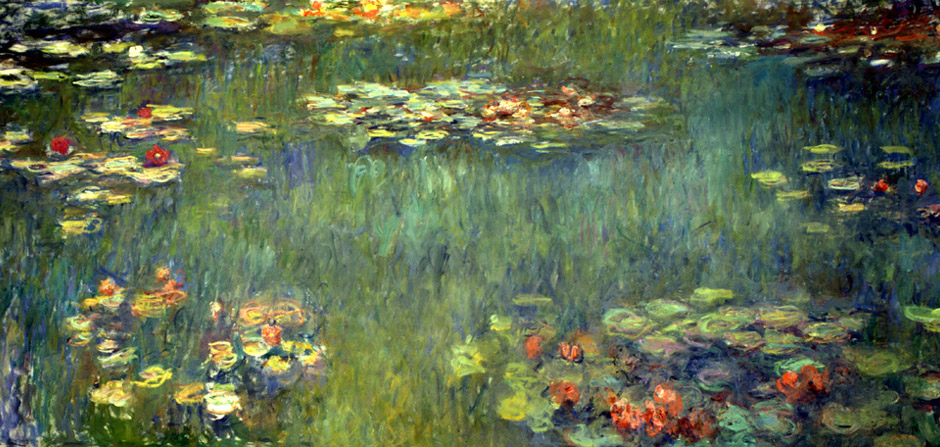artsMonet.com
Claude Monet 1840-1926
Claude Monet - Waterlilies Pond 1920-1926
 Waterlilies Pond |
From Bührle Foundation, Zurich:
Towards the end of his life, Claude Monet undertook a last major project: a series of paintings of the ponds with water lilies in the garden of his house in Giverny, near Paris. With the help of the President of France, Georges Clémenceau, who was also a personal friend, the artist donated many of these large paintings to the nation. Upon entering the two oval rooms where they now hang, visitors have the impression of being in the midst of lily ponds. Immediately after Monet's death in 1926, 22 of them were brought to Paris and installed in the Orangery of the Tuileries near the Louvre, where they can still be seen today. A further twenty paintings of similar size, which were not required there, remained in the artist's studio in Giverny. When Emil Bührle bought three of them on a short visit to Giverny in 1951, he was only the second collector in the world to think it worth making a purchase of this kind. Most of his contemporaries regarded these paintings as mere decorative pieces, which was reflected in their very modest prices. The painting Water Lilies, Green Reflections cost 24,000 francs roughly half of the price paid at the time for one of Monet's classical, gold-framed landscapes. One likely reason for Bührle's decision to buy them is his donation to the Kunsthaus of a large extension building for exhibitions, which was in progress at around the same time. It must have been easy for him to envisage the large Lily Pond paintings in an architectural context. Bührle gave two of them to the Kunsthaus Zürich, by means of a grant from the building fund that he himself had set up. Just four years afterwards, the Museum of Modern Art in New York bought one of the other paintings in the series, which raised the status of them all to a new level. Monet's Lilies were suddenly recognised as works of genius that prefigured Abstract Expressionism, the movement that dominated the New York scene in the 1950s. The one-time decorative works underwent a metamorphosis into icons of Modernism, central to the art history of the twentieth century.